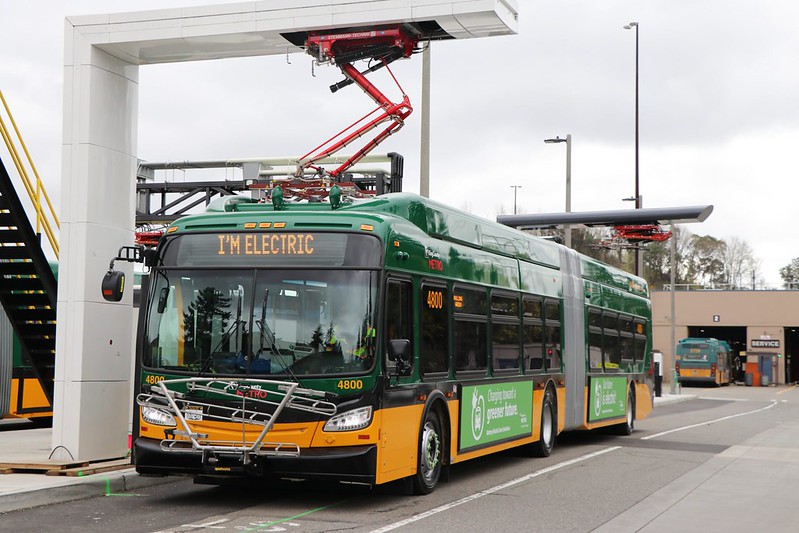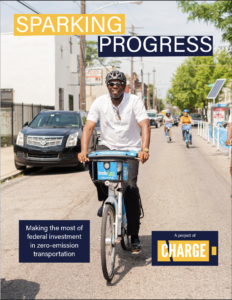Sparking Progress: A new report on our electric future
The federal government provided billions of dollars to make transportation cleaner and greener. But to reduce emissions, we need to do more than spend money on the same tired solutions. A new report from the Coalition Helping America Rebuild and Go Electric (CHARGE) explains how federal investments can advance equity and clean energy goals.

To avoid the most harmful impacts of climate change, the time to reduce emissions is now. And when it comes to transportation (the largest contributor to U.S. greenhouse gas emissions), policymakers have an opportunity to make significant progress. After all, two massive infusions of federal cash have provided states with a wealth of resources to advance their emissions goals.
President Biden’s Justice40 Initiative pledges at least 40 percent of the overall benefits of federal clean energy investments to underserved communities. The $1.2 trillion infrastructure law and $500 billion Inflation Reduction Act can both support a more equitable, cleaner, healthier, and more affordable transportation future. However, conventional methods of reducing transportation emissions—namely, incentivizing the production and purchase of private electric vehicles—are insufficient to meet our nation’s goals and would likely leave Justice40 communities behind. Find out why investing in electric vehicles alone won’t advance equity.
As a new report from the CHARGE Coalition explains, there’s a better approach—one that will not only reduce emissions but ensure that the benefits of pollution-free transportation will improve the health and economic well-being of a large number of people. Federal policy and investment can help move the needle by prioritizing three key areas.
1. Public transit
Transit is a longstanding, low-emissions travel option that has suffered across the country due to a lack of investment. Increasing public transit investments into operations, e-fleets, reliability, maintenance facilities, and workforce development will also boost the number of trips people take outside of a private vehicle—lowering emissions.
See how investing in transit operations can reduce private vehicle trips and lower emissions.
2. Electric vehicle charging infrastructure
Garage access shouldn’t be a prerequisite to electric vehicle access. Decision makers can ensure our emerging charging network is developed to be seamless and efficient, supports all types of mobility, is located strategically, and effectively serves people in multi-unit dwellings as well as stand-alone houses, as well as car-share, rental and business fleets.
Learn more about what smart EV infrastructure could look like.
3. Medium- and heavy-duty vehicles
The report also looks at opportunities to spur the conversion of our most polluting vehicles to zero emissions, reducing carbon while sparing the health of all Americans, especially for low-income and communities of color that are disproportionately harmed by air pollution from diesel-powered vehicles.
Click here to read the report.
Case studies throughout the report offer examples of initiatives deserving of federal support and that can serve as national models to meet the needs in the above three areas. The report also includes additional topics to consider in electrifying our transportation system, including the rise of micromobility—e-bikes, scooters, and myriad other battery-powered devices—and the need to make significant investments in our electric grid.
The report recommendations are defined through the Coalition Helping America Rebuild and Go Electric (CHARGE) coalition’s principles, which were developed in partnership with 50 of the most influential clean transportation stakeholder groups in the country. Learn more about CHARGE here.





















2 Comments